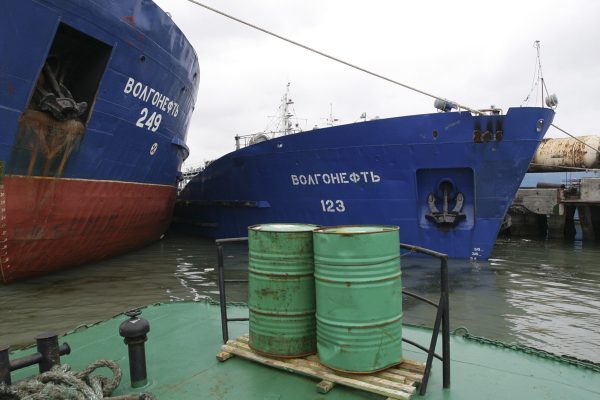After 1949, the North Atlantic Treaty Organization (NATO) largely succeeded in its mission to protect democratic Europe by keeping “the Soviet Union out, the Americans in, and the Germans down,” in the words of its first Secretary General. Russia has never invaded a NATO member, the US has guaranteed alliance security for almost 75 years, and Germany was so successfully kept down that its current generation of leaders struggled to embrace the idea of hard power, even when full-scale war returned to the continent.
Russia’s brazen and brutal invasion of Ukraine, however, has thrown a spotlight on NATO’s strategic and structural weaknesses. Even after years of Russian hybrid warfare and election interference against NATO member states, military aggression and expansionism in Georgia and Ukraine, and now a full-scale war and attempted genocide, it has been unable to reach a consensus on the threat Russia poses and how it should be addressed.
This strategic indecision was on full display at July’s Vilnius summit, where the alliance agreed to a compromise statement promising that Ukraine would join when “conditions are met” (its application to join was accepted at the Bucharest summit 15 years ago). In recent weeks, Russian attacks on Ukrainian grain storage depots and export infrastructure have intensified virtually under NATO’s nose, destabilizing food prices and threatening the lives of millions of vulnerable people across the world. Nearly a quarter of the way through the 21st century, member states must ask themselves: what is NATO’s purpose, and what must be done to fulfill it?
First and foremost, NATO must continue to defend its existing members successfully. However, To do that effectively requires repositioning to deal with threats that NATO’s founders never imagined. In addition to the Russian menace to European states like Ukraine, Moldova, and Georgia, NATO faces wider global concerns. From digital and economic hybrid warfare tactics to climate crises and terrorism, the dangers to NATO member states are increasingly borderless and not limited to kinetic threats from nation-states. While far from fully established, the “no limits” alliance of China and Russia declared by Xi Jinping is already underway and presents a serious risk.
To successfully defend the existing alliance against this proliferation of hybrid threats, NATO must open its doors to new members beyond Europe and North America. In addition to the vital step of bringing Ukraine into the alliance as soon as the war is ended, allowing democracies from other regions to share NATO’s defensive umbrella is in members’ own interests, and would weaken the influence of its adversaries.
The pool of democratic allies NATO works with has expanded significantly since its founding. It already closely coordinates with non-NATO partners, with agreements from AUKUS to Five Eyes and the Ramstein Group, where South Korea and Japan play notable roles. NATO members collaborate with a number of countries in the Asia-Pacific region facing increasing pressure from China. Japan, South Korea, Australia, and New Zealand were all represented at the Vilnius summit.
By opening NATO’s doors, the alliance would not only strengthen its own defenses, it would show that NATO members put their money and military where their mouths are and take the wind out of propaganda depicting the alliance as a tool of post-colonial aggression. Many people in Africa, Asia, Latin America, and the Middle East understandably view NATO as an exclusive Western club and are suspicious of its motives. The failures in Libya and Afghanistan, as well as the US and UK’s war in Iraq, did not exactly inspire trust — and continue to give Russia and China plenty of fuel to argue NATO is no better than they are. This broadening of NATO’s ranks would signal that in the 21st century, the alliance understands its security is bound up with that of democracies far beyond its original borders.
A globally open NATO is additionally crucial because there is no viable alternative able to deter aggression. Since the end of the Cold War, the United Nations (UN), the only multilateral institution with a global peacekeeping mandate, has spectacularly failed to prevent or stop genocide in Rwanda, the Balkans, Darfur, Myanmar, and now Ukraine.
In the wake of the Cold War, the UN proposed its ambitious 1992 Agenda for Peace proposal, with talk of semi-permanent peacekeeping forces and “peace-making” troops to build a more secure world. But even then, there was little Western appetite to bolster the organization’s available force. That lack of will was compounded by the UN Security Council’s structure, with its permanent members able to unilaterally block action on any contentious issue. Russian and Chinese veto power renders the UN toothless in the face of Russian and Chinese aggression.
With reform or replacement of the UN impossible, a globally open NATO is the only viable alternative. Building on its North Atlantic foundations, NATO could evolve into an alliance of global democracies: the New Alliance Treaty Organization.
To achieve this, NATO must first reform its existing structure. The alliance urgently needs to strengthen enforcement procedures for members failing to meet defense spending commitments of a minimum of 2% of GDP. The failed interventions in Afghanistan and Libya must also be reflected on.
NATO must also review and improve the enforcement of its members’ democratic and anti-corruption standards. Turkey and Hungary are obvious culprits, but not the only risks (as Donald Trump’s authoritarian tendencies remind us). Unanimity should also be ditched as a requirement for the accession of new members, as recent history (over Sweden and Finland’s accession) has shown how one election cycle in a single country can hold the entire alliance hostage.
To prepare for the long term, NATO should also develop investment and training programs for potential new members in poorer parts of the world. Such programs must be viewed as investments in our collective long-term security. When poorer countries are better able to defend themselves and their democracies, aggressors will find it more difficult to destabilize them, and NATO members will face fewer dangers emanating from them.
NATO’s readiness to accept members from beyond the North Atlantic would send a clear message to its adversaries and those already waging a hybrid war against its members: “Back off.” Crucially, it would also communicate an important message to its allies outside Europe: “We’re serious. Peace and freedom aren’t just slogans, but actions. NATO defends democracies, and you are welcome to join us if you’re ready to contribute.”
The 21st-century threat landscape calls for a global alliance capable of mutual defense. NATO may be flawed, but it remains the most effective defensive alliance at the democratic world’s disposal. We must strengthen its existing foundations and prepare to open its doors. In the tradition of NATO’s founding logic, but evolved to face a new geopolitical landscape, the New Alliance Treaty Organization would protect the free world by keeping old enemies out, allies both new and old in, and new threats down.
Jessica Berlin is a German and American political analyst and founder of the strategy consultancy CoStruct. She previously lived and worked in Afghanistan, China, Myanmar, Rwanda, the UK, and the US in security, foreign policy, and economic development, including with the US Senate, US Department of Defense, and the German development agency. She is a frequent commentator for international news media.
Europe’s Edge is CEPA’s online journal covering critical topics on the foreign policy docket across Europe and North America. All opinions are those of the author and do not necessarily represent the position or views of the institutions they represent or the Center for European Policy Analysis.





